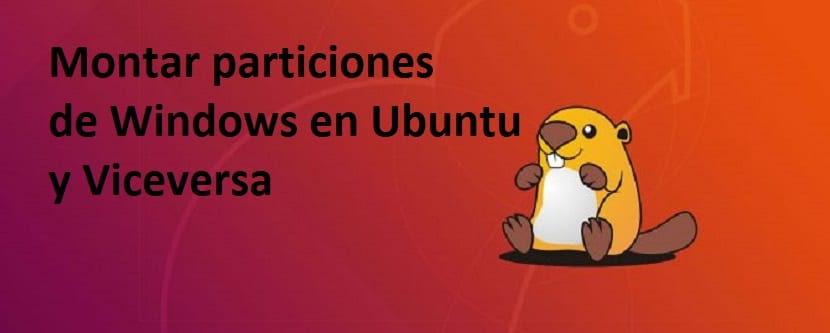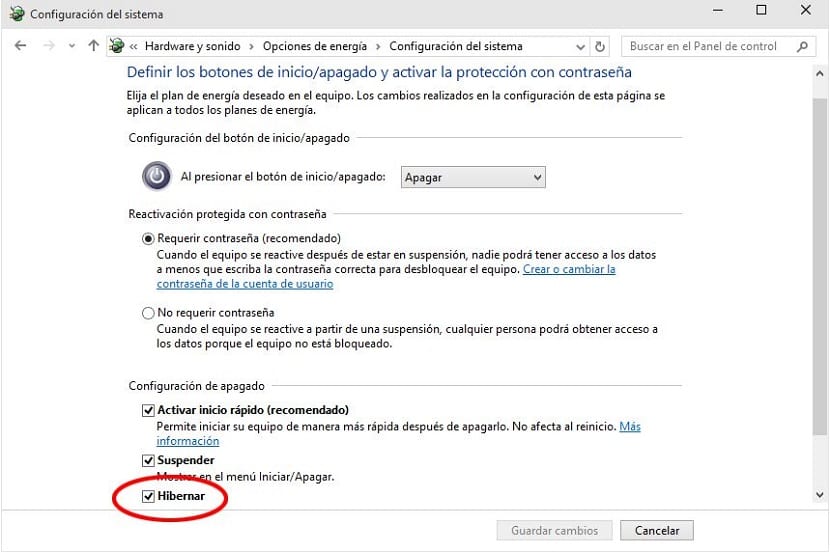
Si you have dual boot on your computer the safest thing is that at some point you have the need to have to access information from the other system either from Ubuntu to Windows partition or from Windows to Ubuntu partition.
The first way does not entail any problem since Ubuntu usually has support for partitions NTFS, FAT32, FAT and others, But the problem happens when it is from Windows since natively the Microsoft system does not have support for the partitions Ext4, Ext3, Ext2, Swap and others.
In addition to Windows 7, a function has been implemented that puts the partition into hibernation so if you want to access the Windows partition you will get an error indicating Windows hibernation and that you must disable it.
So given the case and the questions that usually come from newbies to the distribution, we are going to share some simple methods to be able to access the partitions of both systems.
When we try to open the Windows partition we usually receive the following error:
The NTFS partition is in an unsafe state. Please resume and shutdown
Windows fully (no hibernation or fast restarting), or mount the volume
read-only with the 'ro' mount option.
Which tells us that the Windows partition is in hibernation and we must disable that function.
Access the Windows partition from Ubuntu
Si you don't want to restart your computer to access the Windows partitionThis method only gives you access to all the files on the Windows partition, but only in read mode.
So if you need to make a change or edit you will have to copy your file to your Ubuntu partition.
Esto we do it in the following way, we are going to open a terminal and in it we are going to execute the following commands. First vLet's see where our partition is mount, then we must execute:
sudo fdisk -l
This will show us our partitions and mount point, in my case it is the third partition, we identify this because it is the NTFS partition:
/dev/sda3 * 478001152 622532607 72265728 7 HPFS/NTFS/exFAT
Already having the information we are going to proceed to mount the partition in read mode. Let create a folder where we are going to mount the partition:
sudo mkdir /particion
Y we mount with this command:
sudo mount -t ntfs-3g -o ro /dev/sda3 particion/
Now we can verify that it has been mounted by entering the folder.

The second method to be able to access the Windows partition and in case, if you need to be able to edit the files within it, we must forcefully restart our computer.
We must enter Windows and being inside it we are going to open a cmd window with administrator permissions.
In her we are going to execute the following command:
Powerfcg /h off
This will disable hibernation of the system during this single session. To make the change permanent we must go to the power settings of the system.
- We click on the "behavior of the on / off button."
- We click on "Change settings currently unavailable"
- Go to the bottom of the window. In the section of “Shutdown Settings. Among your options should be to Hibernate. We must click on the box in front of it to deselect it, save the changes and we will be able to restart the computer to access Ubuntu again.
Now we simply have to open our file manager and click the partition and it will be mounted immediately.
If it gives you an error, we just have to execute the following command:
sudo ntfsfix /dev/sdX
Where sdX is the mount point of the Windows partition
Mount Ubuntu partitions on Windows
For this case, we have several tools that make our task easier, among them we can use EXT2FSD, ext2explore, DiskInternal Linux reader, ext2 volume manager, among many others.
I recommend using DiskInternal Linux reader since for me it is one of the most complete and also allows you to mount system images, this tool is usually used to mount system images for Raspberry Pi.
That was the problem or the query by many people that how to see the partitions in the Ubuntu and also in the Windows. By following these steps a user can see the Windows partitions in the Ubuntu, as well as Ubuntu partitions in the Windows and google support you will definitely do that to see the results with the help of this post.
You have set Powerfcg / h off
I guess it's Powercfg !!!!!!!!!!!!!!!!!
Hello!! I have a machine that I want to have Windows 10 and Linux - Ubuntu so I installed Windows 10 and there I created a partition called Data to share with Linux. I left a free hard disk space and installed Linux there. When I installed Linux, I created three partitions: a swap, a root (/) and the home with what was left of the disk. I gave it install and everything installed fine. But when entering Linux and wanting to put files in the Data partition it told me that it was a read-only drive. I went to Windows, looked for the Data partition and changed its properties. I went back to Linux and he let me record a couple of files. The thing is, now it tells me: "Read-only file system" The drive is like ntfs. How do I solve it? Another thing. I need to place the photos that I have in images as a screen saver or as a wallpaper so that they themselves change. How do I do that on Linux? Thanks for the help
Excellent contribution, you saved me all the windows files 😀
With his way I found many errors and was about to give up when I came across this note and in English where I found a very simple method. I leave the translation into Spanish:
«» Using the File Manager
For those using a desktop version of Ubuntu, or one of its official derivatives, the easiest and fastest way to mount NTFS or FAT32 partitions is from File Manager: Nautilus on Ubuntu, Thunar on Xubuntu, Dolphin on Kubuntu and PCManFM on Lubuntu. Just find the partition you want to mount in the left pane of the file manager and click on it; It will be mounted and its content will be displayed on the main panel. Partitions are shown with their labels if they are labeled, or their size if not.
Unless you need your Windows partition (or an NTFS / FAT32 partition for Windows shared data) to be mounted every time you boot for any of the reasons listed below, mounting from the file manager should be sufficient.
If you are using a Wubi version of Ubuntu and want to explore the host partition, you do not need to mount it; it is already mounted in the "host" folder. Click on "File System" in the left pane of Nautilus file explorer and then open the host folder that you will see in the main pane. "